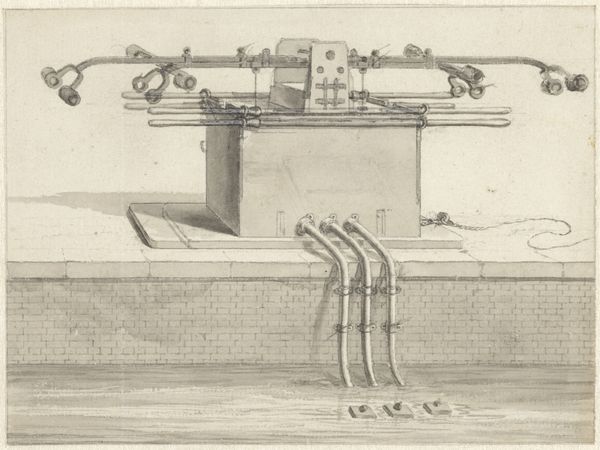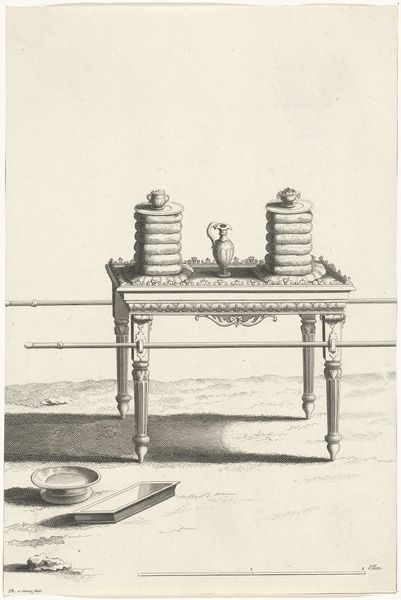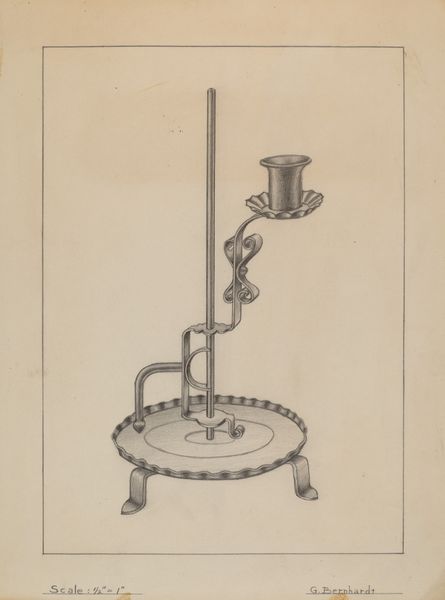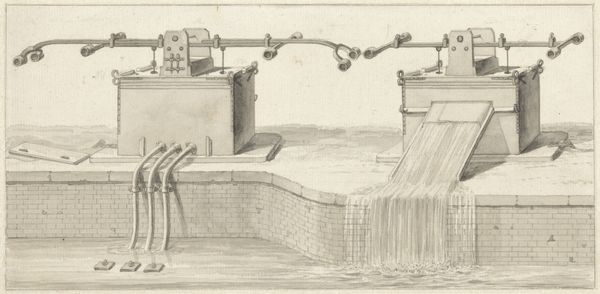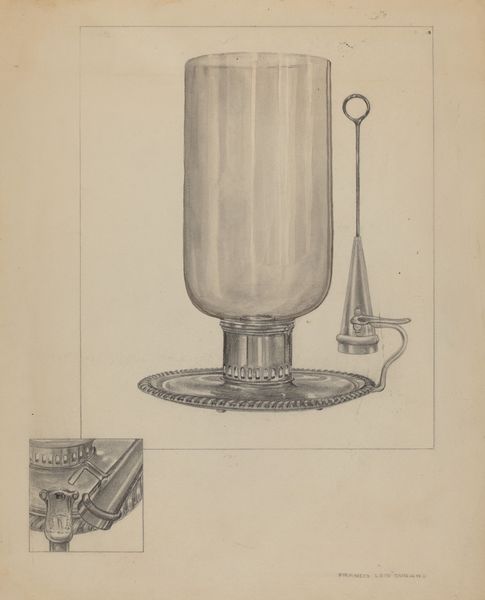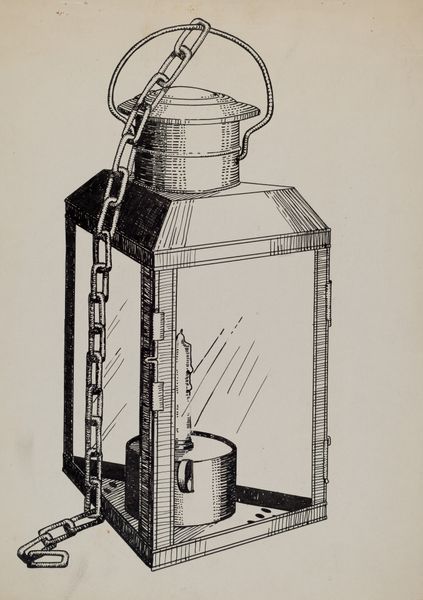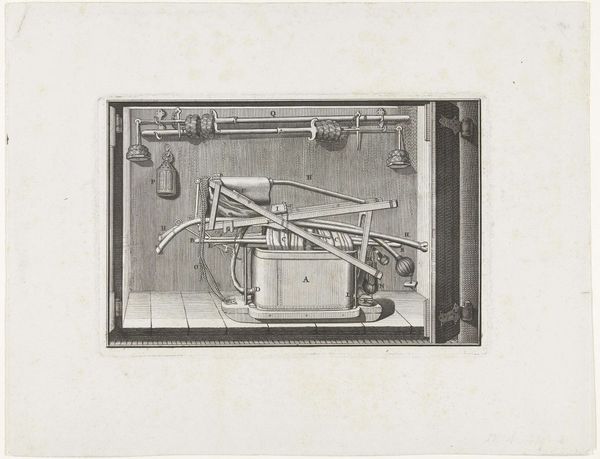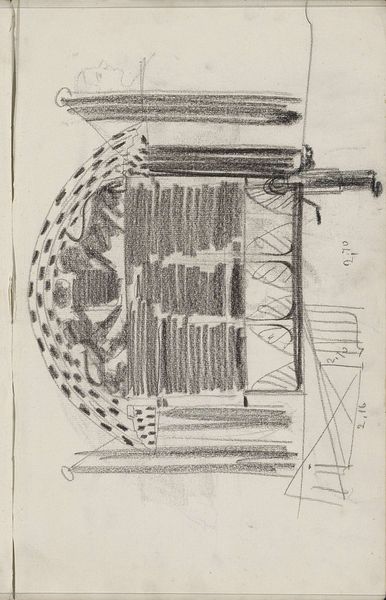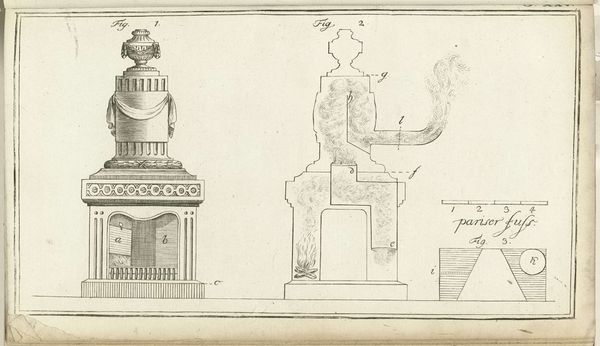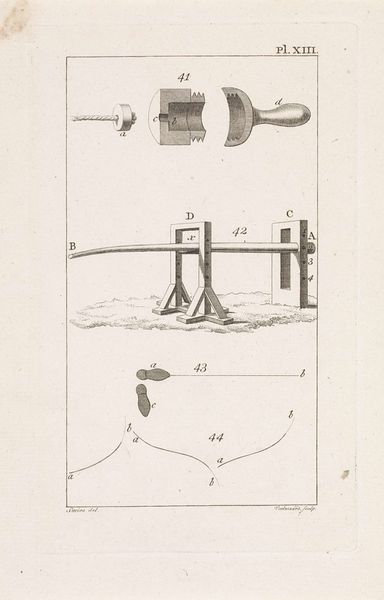
drawing, ink, graphite
#
drawing
#
ink
#
geometric
#
graphite
Dimensions: height 107 mm, width 146 mm
Copyright: Rijks Museum: Open Domain
Curator: Before us, we have "Apparatuur," a drawing crafted between 1836 and 1912 by Isaac Weissenbruch and held in the Rijksmuseum's collection. Editor: It strikes me immediately as an exercise in geometrical form; there’s a certain stark simplicity in the verticality of those cylinders and the right angles of the table. A deliberate, functional aesthetic emerges. Curator: Indeed. The artwork's creation likely coincides with a surge in scientific inquiry and technical drawing as crucial tools. The Rijksmuseum possesses a significant archive that places Weissenbruch as part of the Hague School; he and others rendered equipment with utilitarian intent, reflecting the rising emphasis on both empirical study and pedagogy. Editor: Utilitarian it may be, but the linework, a meticulous blend of graphite and ink, lends the piece an almost haunting quality. Note how the cross-hatching articulates the volume of cylinders 'A' and 'B.' The serpentine connection evokes a sense of dynamic potential despite its static form. It’s visually quite compelling in its austerity. Curator: Precisely! Consider the geometric progression – cylinder to connecting hose to valve. What sort of apparatus are we contemplating? Was it destined to shape societal norms, such as a means of distilling a precious, regulated liquid or creating an efficient boiler? How was this drawing subsequently consumed by its immediate public? Its reception cannot be divorced from its content. Editor: From my perspective, the function it represents is subordinate to its abstract presence. The letters inscribed further along the plane amplify a conceptual dimension. The artwork operates almost as a schematic diagram – stripped bare to the very components of the essence. The drawing transcends its representational purpose, almost veering into abstract thought. Curator: That's certainly an angle to consider! These artists saw art's functionality, representing machinery to inform and record progress while echoing larger sociopolitical shifts from their particular moment in the cultural revolution. Editor: Well, that perspective has widened my view – and mine hopefully informs a formal appreciation for what these lines themselves communicate. Curator: Precisely. Hopefully, that helps everyone interpret it further, in light of the artist, in light of societal impact, and finally, with the simple grace afforded through formal compositional analysis.
Comments
No comments
Be the first to comment and join the conversation on the ultimate creative platform.
